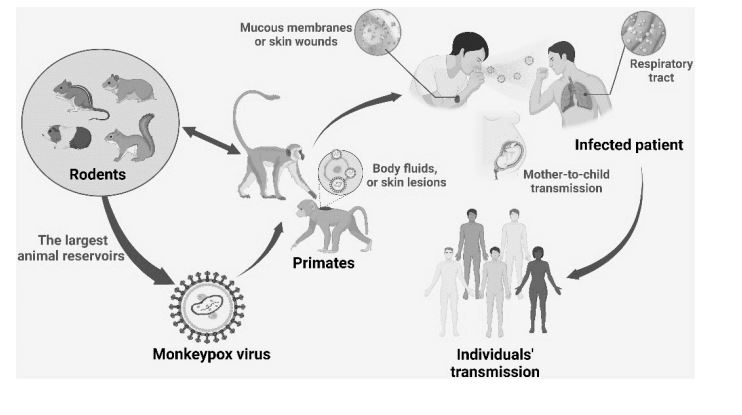Evaluating Monkeypox Transmission Dynamics: Implications for Public Health Interventions
Keywords:
Monkeypox, Transmission dynamics, Public health interventions, Human-to-human transmission, Zoonotic transmission, Respiratory transmission, Public awarenessAbstract
Monkeypox affects animals and humans, poses significant challenges to public health. Understanding the transmission dynamics of monkeypox is crucial for developing effective interventions. This study provides an assessment of the various modes of transmission and explores implications for public health interventions. Human-to-human transmission of monkeypox primarily occurs through close contact with infected individuals. Direct contact with respiratory tract secretions, skin lesions, or bodily fluids plays a significant role in transmission. Activities such as caring for sick individuals or participating in traditional burial rituals involving contact with the infected person's body are associated with a higher risk of transmission. Zoonotic transmission is another important route, primarily through contact with infected animals or consumption of their meat. Respiratory transmission, through coughing or sneezing, and rare instances of airborne transmission have also been reported. Several public health interventions are recommended to control monkeypox transmission. Active surveillance systems enable prompt detection and monitoring of cases, facilitating early response and containment measures. Strict infection control measures, including isolation procedures, personal protective equipment, and hand hygiene protocols, should be implemented in healthcare settings. Public awareness campaigns are essential to educate the public about transmission routes and preventive measures, promoting hand hygiene, avoiding direct contact with infected individuals or animals, and safe food handling practices. The smallpox vaccine, offering cross-protection, is currently used in endemic areas. Contact tracing and quarantine of close contacts can help limit transmission, and vector control measures targeting rodents can reduce zoonotic transmission risk. International collaboration is vital for monitoring and responding to monkeypox outbreaks, considering the potential for global spread. Sharing information, resources, and expertise among countries fosters a coordinated response and helps prevent cross-border transmission.
